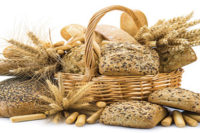Every year, as the holidays come to a close and resolutions kick in, many Americans vow to lose weight. Despite their best wishes, there’s no reset button on holiday excess, and therefore nearly half of Americans admit to committing to a diet but failing after just six months. When diets fail in a matter of months, people often seek a quick fix to manage their weight. But it’s hard to know where to begin, or what information sources to trust.
 While it’s important to get back on track with a healthy diet following the holiday indulgences, it’s just as important to steer clear of fad diets—weight loss plans that guarantee rapid, dramatic results and often do more harm than good in the long run. More often than not, the results don’t last or produce what they promise.
While it’s important to get back on track with a healthy diet following the holiday indulgences, it’s just as important to steer clear of fad diets—weight loss plans that guarantee rapid, dramatic results and often do more harm than good in the long run. More often than not, the results don’t last or produce what they promise.
Over the past few decades, fad diets have saturated American culture: the cabbage soup diet, the Atkins diet, the five bite diet, the master cleanse diet. More recently, people looking for healthier lifestyles have been going back to the basics with raw food and Paleo diets. One of the most-prevalent diets of the past few years is the gluten-free diet, an eating plan originally only followed by those with celiac disease or gluten sensitivity. While only 1 percent of Americans suffer from celiac disease, more than 29 percent report having adopted this diet in an effort to lose weight, not realizing that a wide variety of gluten-free packaged foods are often packed with more sugar and fat than their gluten-containing counterparts, as Consumer Reports recently revealed in its January 2015 cover story. Additionally, avoiding whole grains that contain gluten can lessen the spectrum of nutrients people consume.
More and more experts agree that avoiding gluten is not the right answer for Americans who don’t suffer from sensitivity but are looking to maintain their weight, reports Time (“Should you eat gluten-free bread?,” Nov. 13, 2014). And, without the proper guidance, dieters will continue to fall into poor habits that will only hurt them in the long run.
Eating grains, specifically whole grains, can offer numerous health benefits, while promoting weight management. Whole grains are vital sources of many important nutrients, including fiber, B vitamins—specifically folate—and minerals. Studies have shown that consuming the nutrients found in grains can help reduce cholesterol, prevent birth defects in pregnant women, build a healthy immune system and play a key role in metabolism. The B vitamins found in grains can assist the body in releasing energy and, as a result, assist in weight loss. According to the Dietary Guidelines for Americans, half of a person’s daily grains should be whole grains. Overall, making grains a part of a diet is a simple way to help manage weight.
The key to reaching and maintaining a healthy weight is to eat smaller meals throughout the day and have a balanced plate of whole foods, including fruits, vegetables and whole-grain foods. Already, strides have been made to educate consumers on what makes up a healthy diet, with efforts such as the USDA Choose My Plate initiative, offering consumers informational guides, food plans and online calorie tracking. Additionally, efforts like MOVE! from the Department of Veterans Affairs and the Healthy Weight Commitment Foundation’s educational programs support consumers of all ages in their efforts to follow a healthy diet.
We, as an industry, have an opportunity to share positive messages about grains with consumers. It’s crucial to break consumers of quick-fix, fad-diet habits and educate them on the right tools for a healthy lifestyle and weight management. The industry needs to work together to generate further awareness and encourage people to eat sensibly. By sharing information people can use to incorporate grains into their eating habits, we can continue to support a healthier America and spread the goodness of grains.
Christine Cochran, executive director of the Grain Foods Foundation (GFF), is past president of a Washington-based trade association representing commodity futures exchanges and exchange participants.




